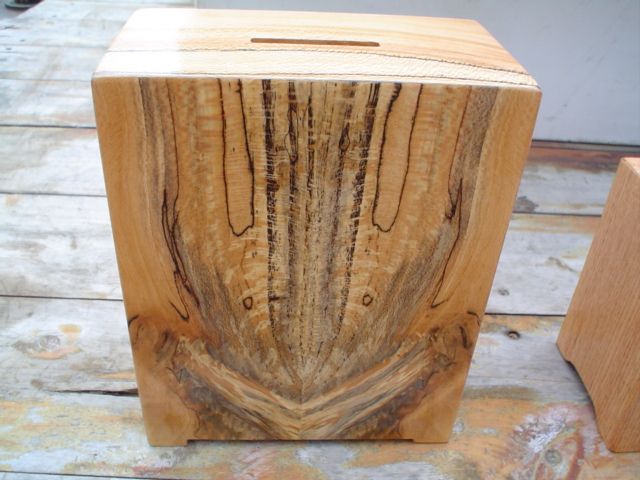Gang-Sawing Small Logs on a Bandsaw Mill
Talking about ways to make milling more efficient for small logs that are barely worth the effort. April 20, 2011
Question
I have a number of small 6 inch diameter red pine logs (approximately 1,000) to cut into 1 inch boards. The manufacturer of the bandsaw I am buying says he has never done it, but I would like to cut 2-3 logs at a time, squaring 3 sides first and then 1 inch cuts. Has anyone done this? Safety is a main concern in securing the logs properly.
Forum Responses
(Sawing and Drying Forum)
From contributor P:
I have a neighbor that does this with a manual bandmill. His has 24' of track and he loads 2 8' logs and mills both logs at the same time. Saves him some load time.
From contributor S:
I've tried this, and it can be difficult to keep more than one small log dogged down at a time. But here's something you can try. Build a table next to your mill out of some RR ties or whatever you have that is sturdy enough. Then square up your logs individually and toss the squares on the table. Then experiment with how many squares you can saw into 1" boards. You may be able to do 2 or 3 at the same time. Any more than that might cause stability problems.
I've sawed up many small logs and my conclusion has usually been that it's not worth it. If you start with 6" logs, you are going to end up with all 4" boards. You'll work all day and have very little footage to show for it. If you add up the cost of buying and running a mill, then add in your time plus the cost of the logs, you might be better off going to a big mill in your area and buying pine lumber from them.
From contributor S:
What we do on small logs is slab them 1", leaving bark edges on both sides. After drying we send them through the gang rip saw to bring them to size. This method somewhat relieves the pain of losing money sawing peckerpole pine. The only guarantee is slabs and sawdust.
From contributor B:
I've sawn like that; it worked just fine. I do it that way when I need stickers. I cut each one down on 3 sides, then gang them together and slab them. Then I take the slabs and turn a couple feet worth up on edge and slice them into stickers.
From the original questioner:
Thank you for your input. Anything is possible, but is it practical? This lot of red pine was given to me as deadfalls from a wind storm. Cutting and removing conditions were perfect and yet when the labour factor is considered, it is a losing proposition other than I was able to build my own pole fences for horses. As pointed out, I can buy the red pine 1X6 from a local mill for $250 Cdn. per mbf. I think it comes down to making the best use of the raw material. Peeling them and selling as fence posts seems to be an easier way to go. The softwood market is a difficult one even in the best of times without the proper equipment.
From contributor G:
So much of the fun sawing is material handling. Sounds like a perfect job for a swingmill. If you are going to use a band mill, I would look at just slabbing the logs. Slab halfway, then flip over and finish. Nothing wrong with the idea of building a fixture to eliminate dogging.
From the original questioner:
I had thought of building a wooden trough with no bottom or top and laying the logs in it using a board under them at the smaller end to bring them up level, and then rotating 90 degrees for the second slabbing. Two in a row would allow 6-8 logs to be squared at a time. The 3rd slabbing could be done with dogs and then rotated for final sizing.
From contributor M:
Sounds like you need a scragg mill. Takes off 2 sides at once, then either slice them on your band or a resaw. You can cant or take off all 4 side boards in two moves - very quick and efficient if you have the manpower. I once saw a picture of a jig for doing what you are talking about. Couple of boards with a spike in the middle sticking up. You set each log on the spike, gave the log a slight tap with a sledgehammer or something similar. I think they could do 3 or 4 logs of this size at once. The spikes held the log enough to saw them without moving. I think they had small blocks next to the spikes to help hold the logs. Look on Norwood or Peterson site's old postings a few years back.
